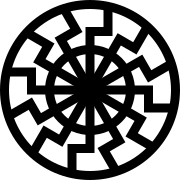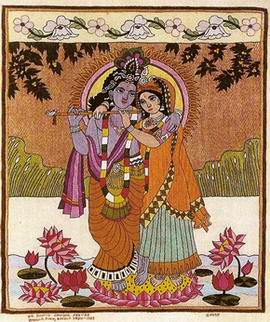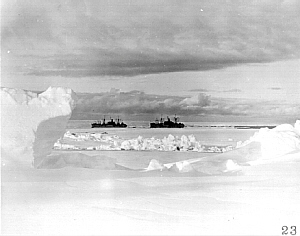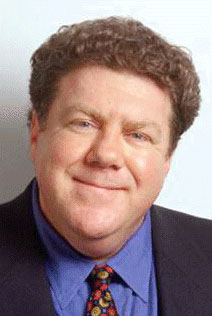 Sir Roger Cholmeley's School at Highgate (Highgate School)
Sir Roger Cholmeley's School at Highgate (Highgate School) is a British
Independent School in London, England. It is a member of both the
Headmaster's Conference and the
Eton Group. Highgate recently made the move towards co-education ending over 400 years of single sex education.
When founded the school was legally documented as the Free Grammar School of Sir Roger Cholmeley, Knight at Highgate in letters patent of Queen
Elizabeth I in 1565. In this period up to 1871 it was known commonly as The Free Grammar School at Highgate, the Highgate Grammar School or the Cholmeley School, when not referred to legally. By the 1870s the school was by no means free anymore and provided to gentlemen esquire and the upper middle classes. For this reason the name was changed to "Sir Roger Cholmeley's School at Highgate", which it is still known by today in the charitable status list. In the later part of the 19th Century the school's current title
Highgate School developed, as it competed with better-known public schools with area names like
Eton College,
Harrow School and
Winchester College.
Three separate schools now come under the Highgate Foundation, which manages not only the Senior School but also a
prep school and a pre-prep school.
History Due to the Foundation's significant ownership of land and properties around the school, it has been able to invest greatly in the school's facilities; the relatively recent conversion from boarding to day school has increased the space available for this to continue. The Foundation's governing body consists of 12 members; 5 are nominated (one each by the Universities of
Oxford,
Cambridge, and
London, by the
Bishop of London, and by the
Lord Chief Justice), and the rest are co-opted. The school is a member of the
Eton Group of leading independent schools.
Administration T. S. Eliot OM (1888–1965), American-born British poet, dramatist, and literary critic, winner of the
Nobel Prize for Literature in 1948
Sir
Robert Stopford KCVO,
CBE,
Bishop of London Rev Kenneth Hunt, footballer who was instrumental in taking
Wolverhampton Wanderers to FA Cup victory
Jon Ingold, author
Sir Kyffin Williams RA - award-winning
Welsh artist
Dr Andrew Zbigniew Szydlo - Dr Szydlo made a name for himself by appearing on Channel 4 TV Show
That'll Teach Them Albert Knight,
England cricketer
Graham Wallas, socialist and founder of the
Fabian Society Notable members of staff The school operates a house system like many other public schools and on entering, pupils are placed in a house according to where they live (although the system does appear inaccurate, on occasions). These houses are Northgate, Southgate, Westgate, Eastgate, Queensgate, Kingsgate, Midgate, Fargate, Heathgate, The Lodge, School House and Grindal House. Each house has a Housemaster in charge of the pastoral, as well as academic well-being of house-members, and tutors for each year group. This system was established to create 'house spirit' among the students, allowing for both academic and sporting competitions among the houses. Some of these, like School House, Grindal, and The Lodge used to be boarding houses. However, other houses, such as Kingsgate, are newer, having been created by a dissaffected group of Westgateans in the 1970s.
Houses Former pupils are known as
Old Cholmeleians, after the school's founder, Sir Roger Cholmeley, and Highgate has a diverse range of well-known old boys, most notably in the arts and literature. All former pupils are inducted into the Old Cholmeleians' Society upon leaving; the society has several events at the school and elsewhere for old pupils. Members past and present include:
Alumni Peter Beazley (politician)
David Burrowes (politician)
The Rt Hon
Charles Clarke (politician -
Secretary of State for Education (2002-2004)
Home Secretary (2004-2006)
Sir John Cockburn (Australian politician -
Premier of South Australia)
The Rt Hon
Anthony Crosland (politician-
Secretary of State for Education and Science (1965-1967)
President of the Board of Trade (1967-1969)
Foreign Secretary (1976-1977)
The Rt Hon
Bernard Jenkin (politician and Vice Chairman of the
Conservative Party)
Sir Geoffrey Shakespeare Bt (politician,
Chief Whip of the
Liberal Party, Private Secretary to David Lloyd George and
Minister for Overseas Trade)
Christopher Wright (founder of Single's Club)
Sir
Martin Furnival Jones KCB (Director General of
MI5 1965-1972)
The Rt Hon Sir
Robert Atkins MEP
Frank,
Lord Bowles (MP and Deputy Chairman of the
Labour Party)
Rupert Mitford,
Lord Redesdale (
Liberal Democrats Spokesman)
Anthony Howard (political journalist)
Sir
Colin Turner MP
Sir Charles Thomas-Stanford Bt. MP (politician and author. Donated
Lewes Castle to the Nation)
Politics Sir
Maurice Gwyer KCB,
KCSI (
Chief Justice of India and Vice Chancellor of
Delhi University)
Ernest Greenwood (Attorney-General of Northern Nigeria)
Michael Mansfield QC Sir Peter Crane (
High Court Judge)
Sir Anthony Lincoln (
High Court Judge)
Lord Ackner (
Law Lord)
Lord Neill of Bladen QC (Barrister, Vice Chancellor of
Oxford University, Warden of
All Souls College, Oxford)
Sir Brian Neill (Court of Appeal Judge)
Professor Sir
Roy Goode QC (academic, Professor of English Law,
Oxford University)
Sir Anthony Plowman (
Vice-Chancellor of the Chancery Division and
High Court Judge)
Thomas Sargant OBE (Law Reformer and Human Rights Campaigner)
Sir
Frank Douglas MacKinnon (Court of Appeal Judge)
Sir Arcibald Bodkin (
Director of Public Prosecutions)
Nicholas Strauss QC
Law Johnny Borrell of
Razorlight Zak Starkey of
Oasis and
The Who (son of
Ringo Starr)
John Hassall of
The Libertines/
Yeti Crispian Mills of
Kula Shaker Jon Moss of (Culture Club)
Orlando Weeks of
The Maccabees Christian Smith of Stony Sleep and
Razorlight DJ Yoda George Clode of
Illegitimate Sons of the King Piers Marais of
Illegitimate Sons of the King Danny Wilder of
Illegitimate Sons of the King Theo Wieder of
Illegitimate Sons of the King Popular music John Rutter CBE (composer)
Sir
John Tavener (composer)
Alan Bush (composer)
Jan Latham-Koenig (conductor)
Anthony Camden (oboest and conductor)
Howard Shelley (pianist)
Gerard Hoffnung (tubist)
Daniel Hope (violinist)
Brian Chapple (composer)
Simon Bainbridge (composer and Professor of Composition at the
Royal Academy of Music)
Classical music Richard Bebb (actor)
John Box OBE (Academy Award-winning ("Oscar") production designer and art director)
Robin Ellis (actor)
John Leyton (actor and singer)
Adrian Lyne (film director,
Flashdance,
9 1/2 Weeks,
Fatal Attraction,
Jacobs Ladder)
Barry Norman CBE (film critic)
Lloyd Owen (actor)
Geoffrey Palmer OBE (actor)
Robin Ray (broadcaster)
Harry Thompson (television producer)
Murray Walker OBE (motorsport commentator)
Philip Harben (TV Chef)
Paul Rotha (Film Maker)
Christopher Morahan (Theatre, television and film Director, directed
Clockwise (film))
Film and television R.G. Warton (England Cricket team manager)
W.R. Seagrove (Olympic athlete)
David Hays (cricketer)
Douglas Lowe QC (Olympic athlete, President of the Bar Council)
Walter Robins (Captain of the English Cricket Team)
Phil Tufnell (England Cricket Team, TV Personality)
Colin Dryborough (Captain of Middlesex CCC)
R.D Robertson (Rugby Union, Scottish International)
Gordon Crole-Rees (Davis Cup tennis player)
Amin Zahir (fencing, Olympic team)
Science Sir
Reginald Blomfield (
architect; designed the school)
Matthew Garber,
actor Gerard Hoffnung, (cartoonist and musician)
Anthony Green RA, (artist)
Patrick Procktor, (artist)
Nigel Williams, (author, screenwriter and playwright)
Allan G. Wyon, (sculptor)
Marcus Clarke, (author)
Hussein Chalayan MBE, (designer)
Peter Kingsley, (writer on ancient Greek culture)
Mike Ockrent (theatre director)
Arts Nicholas Rowe (1674–1718,
Poet Laureate and dramatist)
Ernest Hartley Coleridge (literary scholar, grandson of
Samuel Taylor Coleridge)
Professor
Vivian Hunter Galbraith (historian, Regius Professor of Modern History, Oxford University)
Gerard Manley Hopkins (poet)
Philip Stanhope Worsley (first published translations of the Odyssey and Iliad)
Edmund Yates (novelist and chose Lewis Carroll as pen name for Charles Dodgson)
Owen Barfield (influenced both
C. S. Lewis and
J. R. R. Tolkien)
Sir
John Betjeman (
Poet Laureate, taught by
T. S. Eliot)
Sir
Martin Gilbert CBE (Historian and official biographer of Sir
Winston Churchill)
Howard Hayes Scullard (historian, editor of the
Oxford Classical Dictionary Walter William Skeat (philologist)
James Augustus Cotter Morison, essayist and historian
Martin Seymour-Smith (poet and biographer)
John Bradley Dyne (President of
Gonville & Caius College, Cambridge)
Scholars and poets Sir Edward Beauchamp (MP and Chairman of Lloyds)
Sir Percy Mackinnon (Chairman of Lloyds)
Sir Alexander Valentine (Chairman of Transport for London)
Sir Arthur Hetherington (Chairman of British Gas)
Sir James Lindsay (Industrialist and management consultant)
Sir Malcolm Field (Chairman of the Civil Aviation Authority and managing director of WH Smith)
Piers Adam (nightclub and restaurant owner, KBar, CLICK, Capisce, ROCK, Mahiki)
Business and commerce Mgr Ralph Brown (
Papal Chamberlain and Canon law expert)
Stanley Booth-Clibborn (
Bishop of Manchester)
Kenneth Clements (
Bishop of Canberra and Goulburn)
Ernest H. Thorold (Chaplain to
HM King George V,
HM King Edward VII, and
HM King George VI).
Norman Tubbs (Bishop of Rangoon and Dean of Chester)
Arthur Kitching (
Bishop of Uganda)
William G Hardie (Archbishop of the West Indies)
Edward Waller (Bishop of Madras)
Henry Durrant (Bishop of Lahore)
Samuel Bickersteth (Chaplain to HM the King and
Canon of Canterbury)
Edward Bickersteth (Bishop of South Tokyo, Japan)
Charles Turner (Bishop of Islington)
Henry Venn (
Canon of Canterbury)
The Armed Forces Stephen Ward (of the
Profumo affair)

 Chancellor (Keeper of the Privy Seal)
Chancellor (Keeper of the Privy Seal)


 Instrumental case ending -- case ending -e and -era: uju bate gela (15); kuthare chijaa (45).
Instrumental case ending -- case ending -e and -era: uju bate gela (15); kuthare chijaa (45). Timeline
Timeline



 Formation
Formation

 History of the factory
History of the factory
 Use in recreation and motorsport
Use in recreation and motorsport
 Lefthit
Lefthit